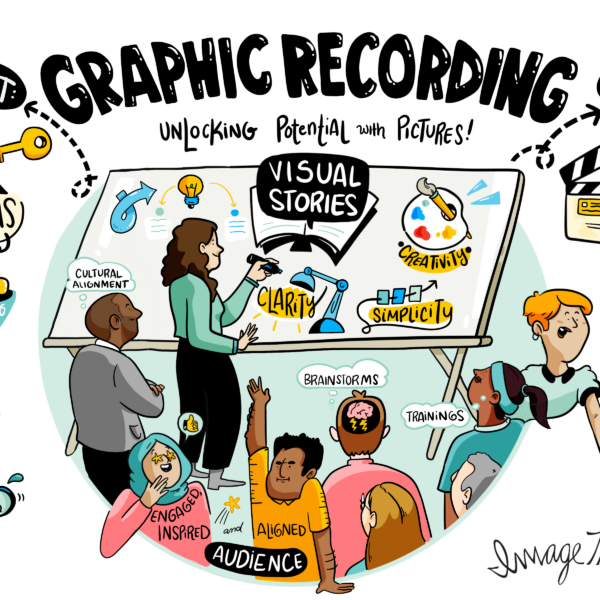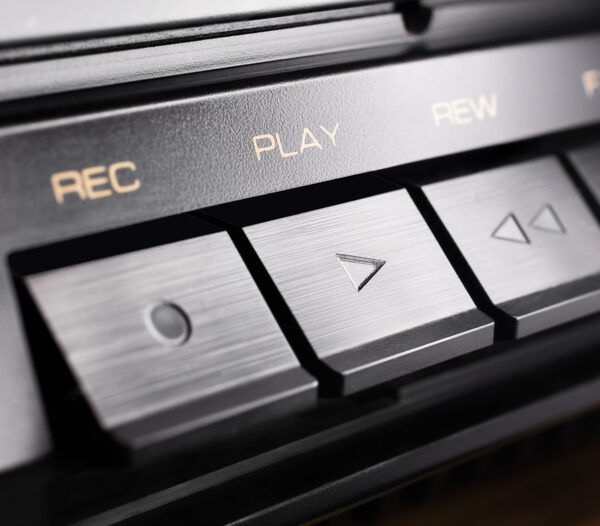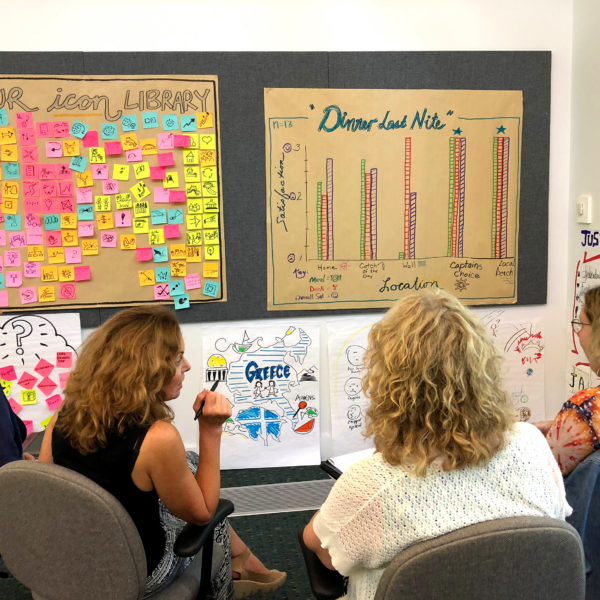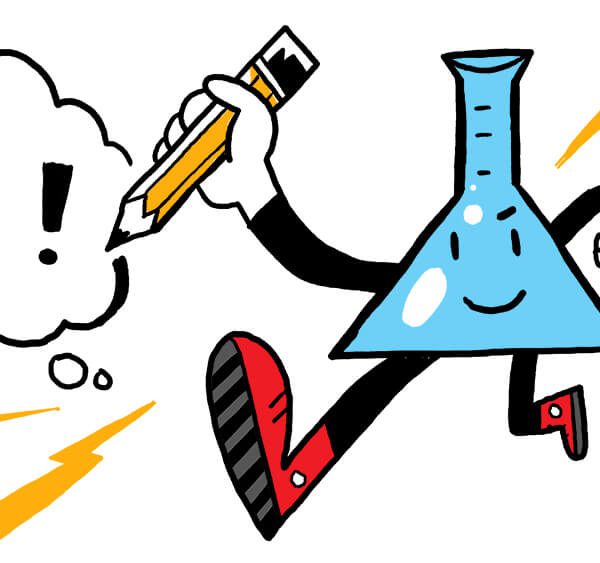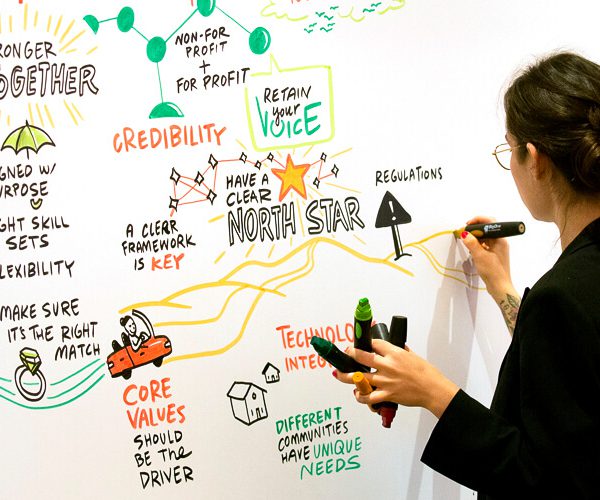Sometimes, it can be difficult for new clients to understand why graphic recording and graphic facilitation is so effective. This article is part of an ongoing series, It’s a Visual World. In it, we explore everyday experiences that showcase the myriad ways our brains work more efficiently with visual input. Look for areas in your daily life for the visual iconography you rely on, then give us a call. Seeing is believing.
Remembering Your New Year’s Resolutions
Did you land on any resolutions? Running 3 days a week? Reading more? Finally catching up on your favorite show? At ImageThink, we want to continue to share our knowledge and insights, and promote ways that you can bring visual thinking and leadership into your every workday.
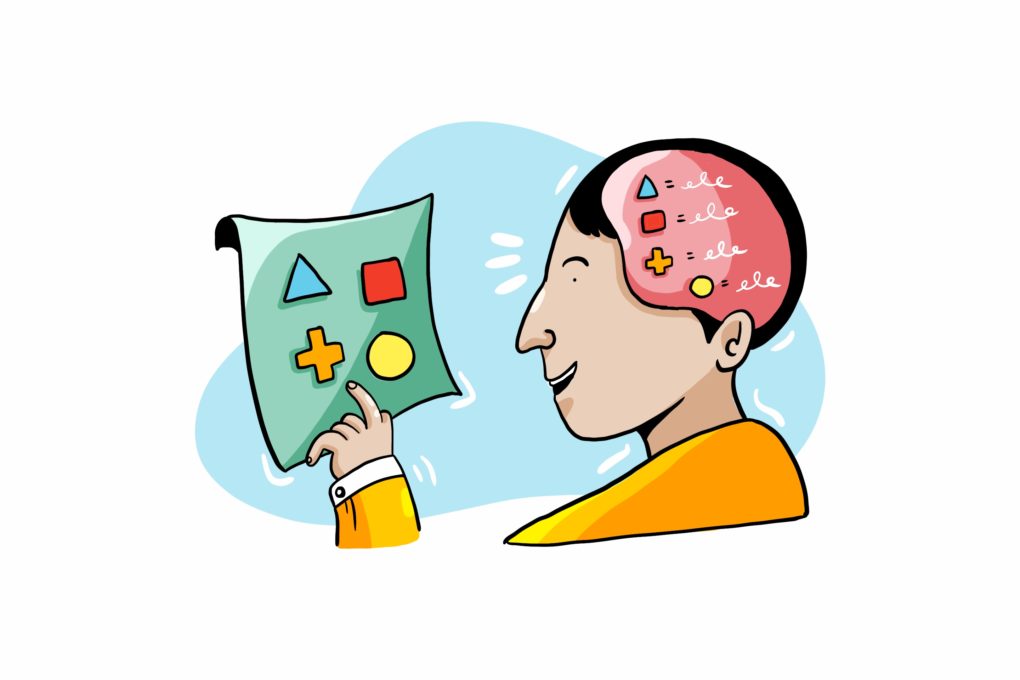
To kick off, we’ll start by sharing a little of what we know about visual mnemonics and why they work. Whether or not you resolved to take art classes, by the end of this post, we bet you’ll be scribbling in the margins of your own notepad to make things more memorable (not to mention fun to look at)!
What are Mnemonic Devices and Visual Mnemonics?
For starters, a mnemonic device is a memory aid, intended to assist in the retention and retrieval of information. Popular mnemonic devices include rhymes, poems, acronyms, songs, gestures, or, as you may have guessed, images.
Deriving from the Ancient Greek word mnemonikos, which means “of memory,” the word’s root comes from Mnemosyne, the Greek goddess of memory in mythology. The original system of Greek (and later Roman) mnemonics most popularly used imagined places, such as homes or buildings, in which every object, wall, window, and piece of furniture could be associated with information to be remembered.
What is the Purpose of Using a Mnemonic Device?
If this is ringing a certain pop-culture bell with any of you, yes, this is all very Benedict Cumberbatch’s Mind Palace from BBC’s Sherlock.Practitioners would often construct entire towns, in which existed hundreds and thousands of rooms for storing specific data. This system was later adapted to use letters of the alphabet and later numerals for the associations, rather than physical places.

At their core, mnemonics are intended to help individuals be more efficient with their brain’s storage capacity and remember more information. By associating and connecting data, it is both stored more permanently, and more readily accessible.
Over the years, people have devised countless types of mnemonics, including musical mnemonics (the ABC’s song), acronym mnemonics (ROY G BIV), model mnemonics (the diagram for reduce, reuse, and recycle), and phrase mnemonics (i before e except after c).
What are Types and Examples of Mnemonic Devices?
Just as people have different favored learning styles, there are several types of mnemonic devices, which will work differently for different people.
Visual Mnemonic Devices
Our favorite method of memorization, this type of mnemonic device relies on imagery to relate words or ideas. The more whimsical and creative, the better.
Acrostics/Acronyms
Acrostic sentences like Please Excuse My Dear Aunt Sally may be used to remember the mathematical order of operations. Or, if the word is unique enough, you might be able to simply use the acronym, PEMDAS.
Rhyming Mnemonics
Odds are you know when Christopher Columbus set sail thanks to one of these… (In fourteen hundred and ninety TWO, Columbus sailed the ocean BLUE.)
Chunking
Humans are really good at remembering 3-5 items of information. But when we try to remember more, it starts getting difficult. It’s one of the reasons we break phone numbers into sets of 3 digits, 3 digits, and 4 digits.
How Mnemonic Devices Relate to Graphic Recording
What our graphic recorders do, whether live on site, or here in the studio, is to create engaging, fun, and deceptively simple visual mnemonics to aid with the memorization and communication of big ideas.
For instance, one of our favorite icons to use is this fun guy, a boisterous and boxy robot who represents the concept of automation. Audiences remember the fun character, and associate it with the point of the presentation, and those presenting have a useful, visual bookmark in their narrative.
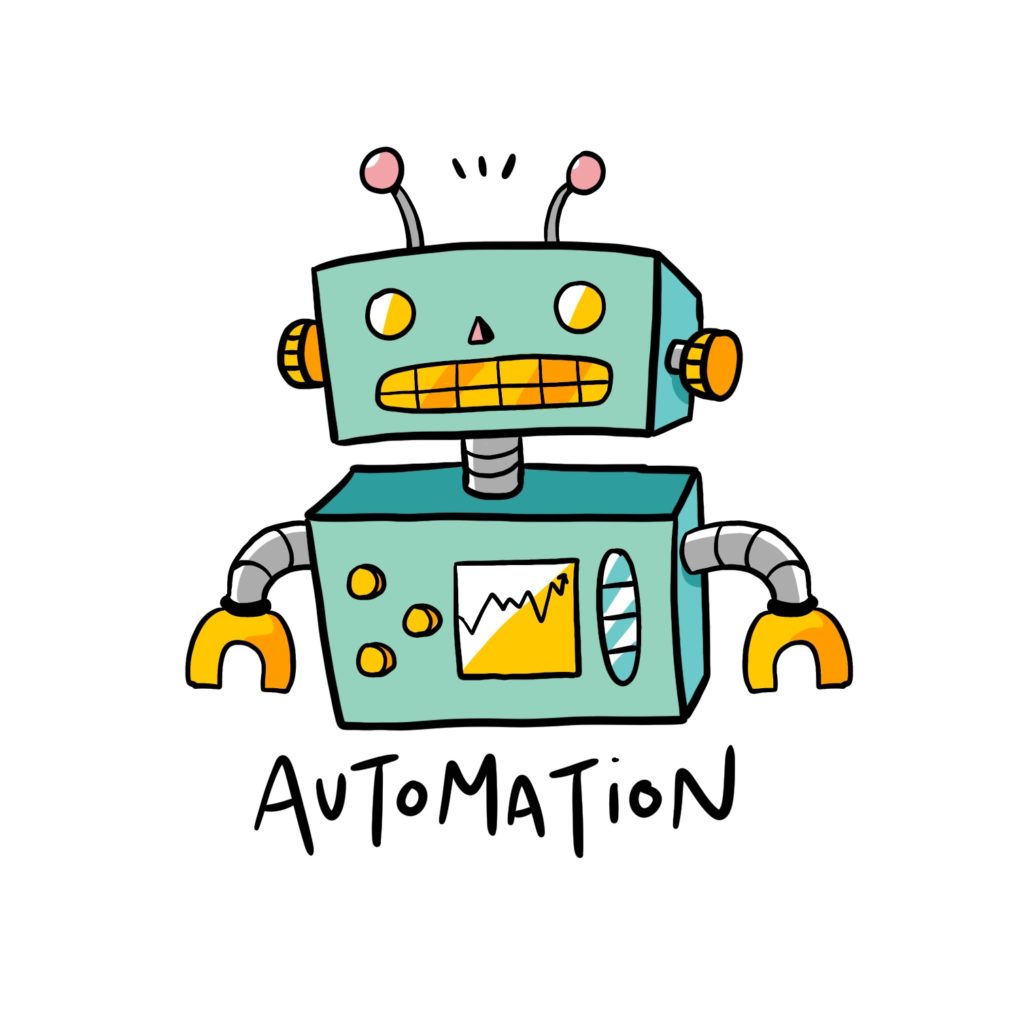
Studies have shown that adult short-term memory is limited, and that mnemonic devices can help package and retain more information more easily in short-term memory. That packaging of data in the short-term, can in turn, assist with the creation of long-term memories.
All this is to say, whether you want to write limericks, sing a song, or make up fun acronyms, mnemonic devices are a powerful tool to engage and potentially entertain yourself and your intended audience. For us, pictures work best. If you’ve got a big idea (or New Year’s Resolution) and would love a way to see them a little more clearly, give us a call today or schedule a conversation with one of our account managers today.
PS. If you need a way to remember us, just remind yourself that ImageThink Visual Strategists are wizards with markers, or MAGES of the INK. [i]MAGE[th]INK.
